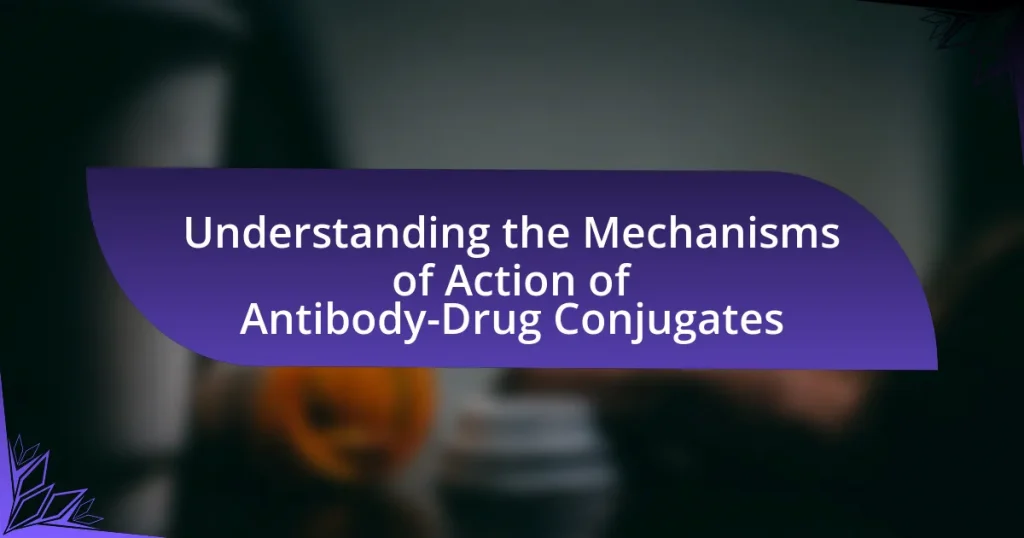Tumor-Infiltrating Lymphocytes (TILs) are immune cells, primarily T cells, that migrate into the tumor microenvironment and play a vital role in the immune response against cancer. This article explores the mechanisms of action of TILs in immunotherapy, detailing their unique characteristics, types, and functions within tumors. It highlights the significance of TILs as biomarkers for prognosis and their potential as therapeutic agents, emphasizing their cytotoxic capabilities and the factors influencing their effectiveness in cancer treatment. Additionally, the article discusses the challenges and future directions for enhancing TIL-based therapies, including combination strategies and technological advancements.
--Tumor-Infiltrating-Lymphocytes-(TILs)-are-immune-cel-1.webp)
What are Tumor-Infiltrating Lymphocytes (TILs)?
Tumor-Infiltrating Lymphocytes (TILs) are immune cells that have migrated into a tumor microenvironment. These lymphocytes, primarily composed of T cells, play a crucial role in the body’s immune response against cancer by recognizing and attacking tumor cells. Studies have shown that a higher density of TILs within tumors is often associated with better clinical outcomes in various cancers, indicating their potential as biomarkers for prognosis and targets for immunotherapy. For instance, research published in the Journal of Clinical Oncology highlights that TILs can predict response to therapies such as checkpoint inhibitors, reinforcing their significance in cancer treatment strategies.
How do TILs differ from other immune cells?
Tumor-infiltrating lymphocytes (TILs) differ from other immune cells primarily in their origin and function within the tumor microenvironment. TILs are specifically derived from T cells that have migrated into tumors, where they recognize and attack cancer cells, unlike other immune cells that may circulate in the bloodstream or reside in lymphoid organs. Research indicates that TILs exhibit a unique phenotype characterized by increased expression of activation markers and cytotoxic molecules, enabling them to effectively target and eliminate tumor cells. For instance, studies have shown that TILs can produce high levels of interferon-gamma and tumor necrosis factor-alpha, which are critical for anti-tumor immunity, distinguishing them from other immune cells that may not have the same level of tumor specificity or cytotoxic capability.
What types of TILs are commonly found in tumors?
Tumor-infiltrating lymphocytes (TILs) commonly found in tumors include CD8+ cytotoxic T cells, CD4+ helper T cells, regulatory T cells (Tregs), and natural killer (NK) cells. CD8+ T cells are crucial for directly killing tumor cells, while CD4+ T cells assist in orchestrating the immune response. Tregs play a role in suppressing immune activity, which can hinder anti-tumor responses. NK cells contribute to the innate immune response against tumors. The presence and composition of these TILs can significantly influence the effectiveness of immunotherapy treatments, as evidenced by studies showing that higher levels of CD8+ T cells correlate with better patient outcomes in various cancers.
What roles do TILs play in the tumor microenvironment?
Tumor-infiltrating lymphocytes (TILs) play critical roles in the tumor microenvironment by mediating anti-tumor immune responses. TILs, primarily composed of CD8+ cytotoxic T cells, recognize and eliminate cancer cells through the release of cytotoxic molecules such as perforin and granzymes. Additionally, TILs can produce cytokines like interferon-gamma, which enhances the immune response and promotes the activation of other immune cells, including dendritic cells and natural killer cells. Studies have shown that a higher density of TILs in tumors correlates with improved patient prognosis and response to immunotherapy, indicating their importance in shaping the tumor microenvironment and influencing therapeutic outcomes.
Why are TILs important in cancer immunotherapy?
Tumor-infiltrating lymphocytes (TILs) are crucial in cancer immunotherapy because they represent a direct immune response against tumor cells. TILs are a subset of lymphocytes that have migrated into the tumor microenvironment, indicating that the immune system has recognized and is attempting to combat the cancer. Their presence is associated with improved patient outcomes, as studies have shown that higher levels of TILs correlate with better prognosis in various cancers, including melanoma and breast cancer. For instance, research published in the Journal of Clinical Oncology demonstrated that patients with high TIL levels in their tumors had significantly improved survival rates compared to those with low TIL levels. This underscores the importance of TILs as both biomarkers for tumor aggressiveness and as potential therapeutic agents in immunotherapy strategies.
How do TILs contribute to anti-tumor immunity?
Tumor-infiltrating lymphocytes (TILs) contribute to anti-tumor immunity by recognizing and attacking cancer cells within the tumor microenvironment. TILs, primarily composed of CD8+ cytotoxic T cells, are activated by tumor antigens presented on major histocompatibility complex (MHC) molecules, leading to the release of cytotoxic granules that induce apoptosis in tumor cells. Studies have shown that higher densities of TILs correlate with improved clinical outcomes in various cancers, such as melanoma and breast cancer, indicating their critical role in mediating immune responses against tumors.
What evidence supports the efficacy of TILs in cancer treatment?
Tumor-infiltrating lymphocytes (TILs) have demonstrated efficacy in cancer treatment, particularly in melanoma, where studies show that TIL therapy can lead to objective response rates of 50-70%. Clinical trials, such as those conducted by Rosenberg et al., have reported durable responses in patients with metastatic melanoma after TIL infusion, with some patients achieving long-term remission. Additionally, a meta-analysis published in the Journal of Clinical Oncology indicated that TILs can significantly improve overall survival rates in various solid tumors, reinforcing their role as a potent immunotherapeutic approach.
-exe-2.webp)
How do Tumor-Infiltrating Lymphocytes exert their effects?
Tumor-Infiltrating Lymphocytes (TILs) exert their effects primarily through the recognition and destruction of cancer cells. TILs, particularly CD8+ cytotoxic T lymphocytes, identify tumor antigens presented by Major Histocompatibility Complex (MHC) molecules on the surface of cancer cells. Upon recognition, TILs release cytotoxic granules containing perforin and granzymes, leading to apoptosis of the tumor cells. Additionally, TILs secrete cytokines such as interferon-gamma, which enhances the immune response and recruits other immune cells to the tumor site. Studies have shown that higher densities of TILs correlate with improved clinical outcomes in various cancers, indicating their critical role in anti-tumor immunity.
What mechanisms do TILs use to recognize tumor cells?
Tumor-infiltrating lymphocytes (TILs) recognize tumor cells primarily through the identification of tumor-specific antigens presented on major histocompatibility complex (MHC) molecules. TILs express T-cell receptors (TCRs) that bind to these antigens, which are often derived from mutated proteins unique to cancer cells. This recognition is facilitated by the interaction between TCRs and peptide-MHC complexes, leading to TIL activation and subsequent cytotoxic responses against the tumor. Studies have shown that TILs can effectively target and eliminate tumor cells by recognizing these specific antigens, demonstrating their crucial role in anti-tumor immunity.
How do TILs identify tumor antigens?
Tumor-infiltrating lymphocytes (TILs) identify tumor antigens through the recognition of specific peptide fragments presented on major histocompatibility complex (MHC) molecules on the surface of tumor cells. This recognition occurs when TILs engage their T-cell receptors (TCRs) with these peptide-MHC complexes, leading to TIL activation and subsequent immune responses against the tumor. Research has shown that TILs can recognize a diverse array of tumor-specific antigens, including neoantigens that arise from mutations in tumor DNA, thereby distinguishing cancer cells from normal cells. This specificity is crucial for effective immunotherapy, as evidenced by studies demonstrating that TILs can mediate tumor regression in patients with various cancers, highlighting their role in targeting and eliminating tumor cells.
What role do major histocompatibility complex (MHC) molecules play?
Major histocompatibility complex (MHC) molecules play a crucial role in the immune response by presenting peptide fragments derived from proteins to T cells. This interaction is essential for T cell activation, as MHC molecules display antigens that are recognized by T cell receptors, leading to the initiation of an immune response against pathogens or tumor cells. Specifically, MHC class I molecules present antigens from intracellular sources to CD8+ cytotoxic T cells, while MHC class II molecules present extracellular antigens to CD4+ helper T cells. This mechanism is vital in immunotherapy, as tumor-infiltrating lymphocytes rely on MHC-mediated antigen presentation to identify and attack cancer cells effectively.
How do TILs kill tumor cells?
Tumor-infiltrating lymphocytes (TILs) kill tumor cells primarily through the recognition and destruction of cancerous cells via specific antigen targeting. TILs, particularly cytotoxic T lymphocytes (CTLs), identify tumor-associated antigens presented on the surface of tumor cells by major histocompatibility complex (MHC) molecules. Upon recognition, TILs release cytotoxic granules containing perforin and granzymes, which induce apoptosis in the tumor cells. Studies have shown that TILs can significantly reduce tumor burden in various cancers, demonstrating their effectiveness in immunotherapy settings. For instance, a clinical trial published in the Journal of Clinical Oncology found that patients receiving TIL therapy exhibited a 56% objective response rate in metastatic melanoma, underscoring the potency of TILs in targeting and eliminating tumor cells.
What cytotoxic mechanisms are employed by TILs?
Tumor-infiltrating lymphocytes (TILs) employ several cytotoxic mechanisms to eliminate cancer cells, primarily through the release of perforin and granzymes, which induce apoptosis in target cells. TILs also utilize Fas ligand (FasL) to engage the Fas receptor on tumor cells, triggering a death signal that leads to cell death. Additionally, TILs can produce cytokines such as tumor necrosis factor-alpha (TNF-α) and interferon-gamma (IFN-γ), which enhance the immune response and promote further tumor cell destruction. These mechanisms are supported by studies demonstrating that TILs can effectively reduce tumor burden in various cancer models, highlighting their role in immunotherapy.
How do TILs utilize cytokines in their action against tumors?
Tumor-infiltrating lymphocytes (TILs) utilize cytokines to enhance their anti-tumor activity by promoting immune responses and facilitating communication between immune cells. TILs secrete various cytokines, such as interferon-gamma (IFN-γ) and tumor necrosis factor-alpha (TNF-α), which can directly inhibit tumor cell proliferation and induce apoptosis. Additionally, these cytokines recruit other immune cells, like macrophages and dendritic cells, to the tumor microenvironment, amplifying the overall immune response against the tumor. Studies have shown that the presence of these cytokines correlates with improved patient outcomes in cancer immunotherapy, highlighting their critical role in TIL-mediated tumor eradication.

What factors influence the effectiveness of TILs in immunotherapy?
The effectiveness of tumor-infiltrating lymphocytes (TILs) in immunotherapy is influenced by several key factors, including the tumor microenvironment, TIL phenotype, and the presence of immune checkpoints. The tumor microenvironment can either promote or inhibit TIL activity; for instance, high levels of immunosuppressive cytokines can hinder TIL function. The phenotype of TILs, such as their differentiation status and functional capabilities, also plays a crucial role; effector memory TILs are generally more effective than exhausted TILs. Additionally, the expression of immune checkpoint molecules, like PD-1 and CTLA-4, can negatively regulate TIL activity, thereby impacting their therapeutic efficacy. These factors collectively determine how well TILs can recognize and eliminate tumor cells in immunotherapy settings.
How does the tumor microenvironment affect TIL function?
The tumor microenvironment significantly impairs the function of tumor-infiltrating lymphocytes (TILs) by creating an immunosuppressive milieu. This environment is characterized by the presence of various factors such as cytokines, immune checkpoint molecules, and regulatory cells that inhibit TIL activation and proliferation. For instance, high levels of transforming growth factor-beta (TGF-β) and interleukin-10 (IL-10) can lead to TIL exhaustion and reduced cytotoxic activity. Additionally, the expression of immune checkpoints like PD-1 and CTLA-4 on TILs further diminishes their ability to effectively target and eliminate tumor cells. Studies have shown that the presence of these immunosuppressive factors correlates with poor clinical outcomes in cancer patients, highlighting the critical role of the tumor microenvironment in modulating TIL function.
What are the inhibitory factors present in the tumor microenvironment?
Inhibitory factors present in the tumor microenvironment include immune checkpoint molecules, such as PD-L1 and CTLA-4, which inhibit T-cell activation and function. These molecules interact with their respective receptors on T-cells, leading to reduced immune responses against tumors. Additionally, the presence of immunosuppressive cells, such as regulatory T cells (Tregs) and myeloid-derived suppressor cells (MDSCs), further contributes to the suppression of anti-tumor immunity. Studies have shown that high levels of these inhibitory factors correlate with poor patient outcomes in various cancers, highlighting their role in tumor immune evasion.
How can the tumor microenvironment be modified to enhance TIL activity?
The tumor microenvironment can be modified to enhance tumor-infiltrating lymphocyte (TIL) activity by targeting immunosuppressive factors and promoting a pro-inflammatory milieu. Strategies include the use of immune checkpoint inhibitors, which block proteins that inhibit TIL function, thereby increasing their activity against tumor cells. Additionally, the administration of cytokines such as IL-2 or IL-15 can stimulate TIL proliferation and function. Research has shown that altering the extracellular matrix to reduce physical barriers can also facilitate TIL infiltration and activity. For instance, studies indicate that the enzymatic degradation of hyaluronic acid in the tumor stroma can improve TIL access to tumor cells, enhancing their cytotoxic effects.
What are the challenges in utilizing TILs for cancer treatment?
The challenges in utilizing tumor-infiltrating lymphocytes (TILs) for cancer treatment include variability in TIL quality, difficulty in expanding TILs ex vivo, and the immunosuppressive tumor microenvironment. Variability in TIL quality arises from differences in the immune response among patients, which can affect the effectiveness of TIL therapy. The process of expanding TILs outside the body is complex and can lead to loss of functionality, as studies have shown that only a fraction of TILs retain their anti-tumor activity after expansion. Additionally, the immunosuppressive tumor microenvironment can inhibit TIL activation and function, making it challenging for these lymphocytes to effectively target and eliminate cancer cells.
What limitations exist in TIL extraction and expansion?
Limitations in Tumor-Infiltrating Lymphocyte (TIL) extraction and expansion include low yield of viable TILs, variability in TIL composition, and challenges in maintaining TIL functionality during culture. The extraction process often results in a limited number of TILs due to the tumor microenvironment’s immunosuppressive factors, which can hinder the isolation of effective lymphocytes. Additionally, the heterogeneity of TIL populations can lead to inconsistent therapeutic outcomes, as not all TILs possess the same anti-tumor efficacy. Studies have shown that prolonged culture conditions can lead to TIL exhaustion, diminishing their ability to respond to tumors effectively. These factors collectively impact the overall success of TIL-based immunotherapies.
How do patient-specific factors impact TIL effectiveness?
Patient-specific factors significantly impact the effectiveness of tumor-infiltrating lymphocytes (TILs) in immunotherapy. These factors include the patient’s age, overall health, tumor microenvironment, and genetic background, which can influence TIL functionality and persistence. For instance, older patients may exhibit a diminished immune response due to immunosenescence, leading to reduced TIL efficacy. Additionally, the tumor microenvironment can create immunosuppressive conditions that hinder TIL activation and proliferation. Research has shown that specific genetic mutations within tumors can also affect TIL recognition and response, ultimately determining treatment outcomes. Therefore, understanding these patient-specific factors is crucial for optimizing TIL-based therapies in cancer treatment.
What are the future directions for TIL-based immunotherapy?
Future directions for TIL-based immunotherapy include enhancing the efficacy of tumor-infiltrating lymphocytes through genetic engineering, optimizing the selection and expansion processes of TILs, and combining TIL therapy with other immunotherapeutic approaches such as checkpoint inhibitors. Research indicates that genetically modifying TILs to express chimeric antigen receptors (CARs) can improve their ability to target specific tumor antigens, thereby increasing their effectiveness. Additionally, studies have shown that combining TIL therapy with immune checkpoint blockade can lead to synergistic effects, improving patient outcomes in various cancers. These advancements are supported by ongoing clinical trials that aim to refine TIL-based therapies and expand their applicability across different tumor types.
How can combination therapies enhance TIL efficacy?
Combination therapies can enhance the efficacy of tumor-infiltrating lymphocytes (TILs) by simultaneously targeting multiple pathways involved in tumor growth and immune evasion. This approach can improve TIL activation, proliferation, and persistence within the tumor microenvironment. For instance, combining TIL therapy with immune checkpoint inhibitors, such as anti-PD-1 or anti-CTLA-4 antibodies, has been shown to increase TIL functionality and promote a more robust anti-tumor response. Studies have demonstrated that such combinations can lead to improved clinical outcomes, as evidenced by increased overall survival rates in patients with melanoma receiving both TIL therapy and checkpoint blockade.
What advancements in technology could improve TIL therapies?
Advancements in technology that could improve Tumor-Infiltrating Lymphocyte (TIL) therapies include enhanced genomic sequencing, artificial intelligence for personalized treatment plans, and improved cell culture techniques. Enhanced genomic sequencing allows for the identification of specific tumor mutations, enabling the selection of TILs that are more likely to target and eliminate cancer cells effectively. Artificial intelligence can analyze large datasets to predict patient responses to TIL therapies, optimizing treatment protocols. Improved cell culture techniques, such as 3D bioprinting, can create more physiologically relevant tumor microenvironments, enhancing TIL expansion and functionality. These advancements collectively contribute to more effective and personalized TIL therapies in immunotherapy.
What best practices should be followed when using TILs in immunotherapy?
Best practices for using tumor-infiltrating lymphocytes (TILs) in immunotherapy include optimizing the isolation and expansion of TILs, ensuring proper patient selection, and implementing effective preconditioning regimens. Optimizing isolation and expansion involves using techniques that maximize the yield and functionality of TILs, such as employing specific culture conditions and cytokines that promote TIL growth. Proper patient selection is crucial; candidates should have tumors with high mutational burden or specific neoantigens that can be targeted by TILs. Effective preconditioning regimens, such as lymphodepletion, enhance the persistence and efficacy of infused TILs by creating a more favorable environment for their activity. These practices are supported by clinical studies demonstrating improved outcomes in patients receiving TIL therapy when these strategies are employed.
It is not possible to provide an answer to the question “
” as it does not contain a specific inquiry or context to address.



